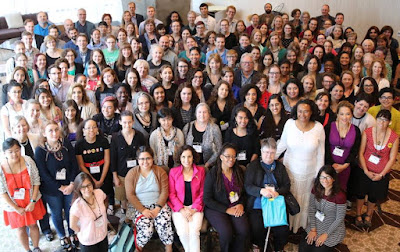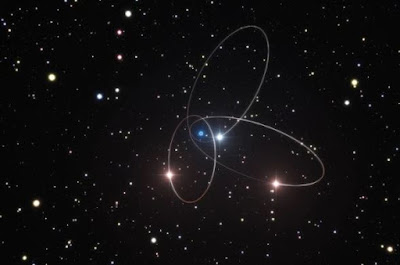 |
| NATIONAL PARKS SERVICE |
Featured Posts (3520)
 |
| Image Source: [1] |
 |
| Housewives and children were incinerated instantly or paralysed in their daily routines, their internal organs boiled and their bones charred into brittle charcoal. [1] |
A second part of the successful book "Moon of Pluton," written by Venezuelan author Ángel David Revilla, better known by his readers as Dross Rotzank, tells how the creation of his latest book and some peculiarities of itself.
Before publishing my first book, I had already written this second part because writing is a passion for me, I'm in love with it. In fact, I opened the Youtube channel with the very premeditated and treacherous idea that publishers would listen to me. Although I later fell in love with this platform for everything it has given me.
The Ysaak War," which began as a short story, but, word for word, became a novel of greater encouragement. "I like to sail on a raft and get into the open sea, and find out how far I'll go. I want to know what I will think of, how I will solve situations ... see what happens. 'The Ysaak War' when I was a story I did not like the end so much, so I added, changed and corrected. So I write, without planning, I enjoy it as much as possible.
The novel, besides being science fiction, mixes the fantasy and goes deep into the characters and their conflicts. For Dross, these qualities relate to the commitment to their readers: to offer the best story.
SHOT-OUT to M. Haynes for forwarding this exciting news!
MOTHER is coming...
...that's right, Octavia Butler, the mother of Black science fiction, is coming to a television near you through Ava Duvernay! Early yesterday it was announced that Duvernay would be creating a television series based off Octavia Butler's novel, Dawn. This marks the first time Butler's work makes a television appearance, and hopefully Mother Butler will once again make way for other Black speculative authors to follow in her footsteps! Take a look at the article here and set your DVRs now!
https://shadowandact.com/ava-duvernay-octavia-butler-dawn-victoria-mahoney-macro
$400 Needed To Reach Our Goal!!
WE NEED YOUR HELP!!
Our current Kickstarter for TITAN THE ULTRA MAN #2 is underway but we need your support to bring the book to life! We're seeking funds to get the book printed and distributed with only $400 dollars away from meeting our goal. We are so very close but need your support to get to the finish line!
Some of the available rewards for backing the book are shown here along with the cover and interior page art from the TITAN THE ULTRA MAN #2 comic.
A review of the comic by Geekery Magazine can be seen here - http://www.geekerymagazine.com/2017/07/28/review-titan-the-ultra-man-2/
Here's How To Show Your Support:
To bring the comic book to print, the $1,000 funding goal must be met. We are currently halfway towards meeting our goal.
- TITAN THE ULTRA MAN #2 needs more backers and another $400 more in order to get funded.
- To pledge go to https://www.kickstarter.com/projects/260671993/titan-the-ultra-man-2-relaunch?ref=user_menu
- The Kickstarter ends on Monday, August 28, 2017 2:54 PM EDT.
You can pledge as little as ONE DOLLAR - Every dollar counts to making the goal!
Thank you for your time and your support!
Tony Kittrell
I am not much for fantasy, sometimes sci-fi can be a stretch, a futurist, yeah. For a digital artist it can be rough. The concept of fine art looms large with its smell of oil or the quick drying acrylic glaze. The image of one who holds the brush as it were a light saber. The image of the imager frozen in framonite to hang before the gazers with hand to chin. Mind gawkers, all of them, peering ever so close to see if brush hairs were inadvertently glued to the surface. The gallant gallery head bobbles with cha-ching. Then I bring my digital print. Doesn't matter if it is an eleven by eight point five inch print or forty by sixty foot print, they ask the same question with a slight distain, "where is the original?". I am ready this time, "I have it right here" and whip out a tiny micro dot on a business card. "You really can't see it until you put this in a computer or print it out as a did for your easier viewing." "And I got some fume of linseed oil in a Glade mister. I expect the same respect you give lithographers and photographers and block printers. And no you can't do this on your office printer......................ever!" Wait till they start putting human brains in automatons, "ooh where is the original?"
Planet of Doom excerpt
By Lawrence Johnson Sr.
It was a dark time for The Planetary Alliance. Two of Princess Arianna’s highly regarded warriors Dajus and Mallobo had gone rogue. Their attacks on the Planetary Alliance and their master computers have thrown the entire galaxy into chaos. Following the attack and destruction of the intergalactic transport ship the Star Lighter and it 8,000 passengers, members of the Planetary Alliance put in a call to Da’Quan, the best intergalactic detective of his time. His job seemed simple, locate Dajus and Mallobo and the alliance would do the rest.
It would be a simple task if it were not for the fact that the two outlaw warriors had the ability to appear and disappear at will. It would be some time before Da’Quan would meet with his new employers. As luck would have it Da’Quan’s ship was forced to crash land on the Planet of Doom.
Just before the crash Da’Quan saw the red flashing lights on the Spirit’s console. He could also hear the warning message constantly blaring over his pa system he named Nano. “Alert, crash imminent, take preventive measures.” Something was pulling his ship down to the planet below. As he struggled to keep his craft airborne Da’Quan noticed a small island up ahead. It was touch and go for a while but Da’Quan was able to get out a distress call to a friend and land his ship without breaking any bones.
The tall dark haired Da’Quan carefully maneuvered his toned six-foot frame into the chair in front of the console. ‘Where the hell am I?’ he asked himself.
After taking a minute to scan his computer charts Da’Quan slumped down into his seat. He took a deep breath and double checked his charts hoping that he had made an error but there was no doubt about it, Da’Quan had landed on Akanon, better known as the Planet of Doom. His only hope was to try and repair his ship and leave before he was discovered.
It was midday, the weather was warm, there were no signs of Artificial Intelligence but within a few minutes Da’Quan could hear voices headed in his direction.
 |
| A pair of nearby galaxies where "intergalactic transfer" may be happening. (Fred Herrmann) |
 |
| Conceptual illustration by Yuen Yiu, staff writer Image credits: zhouxuan12345678 via flickr/CC BY-SA 2.0 |
 |
| A true-colour image containing around 8 × 105 RGB subpixels directly photopatterned using Cs2N3– capped quantum dots. Scale bar, 5 mm. Courtesy: D Talapin |
| Images Source: Link below |
Topics: Astrophysics, Black Holes, Einstein, General Relativity, Diversity in Science, Women in Science
Black-Hole Hunter Takes Aim at Einstein, Joshua Sokol, Quanta Magazine
CONSTANT "RE-REGURGITATION"....NO NEW IDEAS, and too Arrogant and Selfish to Breed and Establish any "BOLD/NEW/EXCITING" Franchise Brands and IDEAS; Hollywood has some "Changing to DO!"
CONSTANT "RE-REGURGITATION"....NO NEW IDEAS, and too Arrogant and Selfish to Breed and Establish any "BOLD/NEW/EXCITING" Franchise Brands and IDEAS; Hollywood has some "Changing to DO!"
WANT to SEE SOME "ALL NEW ORIGINAL" Franchise Brands and IDEAS; HERE WE ARE!
WE do NOT "COPYCAT" off of Marvel/DC/DISNEY/IMAGE or Others; "YES", Those GIANTS "INSPIRED/INSPIRE US"; BUT we Create/Write and Develop OUR OWN NEW/EXCITING/COPYRIGHTED" Franchise Brands and Characters/////
we "HONOR" WOMEN & MOMS, and MILITARY Females with our NEW, EXCITING "G.i.J.i.M.O.M." Series: http://thesiborg.com/ http://familymediasite.com/ http://tdmcomics.com/ http://post-up.me/
http://www.hollywoodreporter.com/…/box-office-hollywoods-fr…
Box Office: Hollywood's Franchise Crisis Worsens Over July Fourth
 |
| The Women in Astronomy IV conference was held in Austin, Texas, following the American Astronomical Society meeting in June. Credit: J. Hellerman, NRAO/AUI/NSF |
 |
| Image Source: NYT |
Topics: Climate Change, Environment, Geophysics, Weather
An Iceberg the Size of Delaware Just Broke Away From Antarctica, Jugal K. Patel and Justin Gillis, New York Times
 |
| Image Source: Business Insider |
Topics: Geophysics, Politics, Research, Science
 |
| Wikipedia: Doomsday |
The underlying physics of natural hazards, Physics World Multimedia
 |
| NASA’s Solar Dynamics Observatory spacecraft captured this view of a sunspot rotating into view between July 5 and 11, 2017. (Source: NASA’s Goddard Space Flight Center/SDO/Joy Ng, producer) |
Incredible video shows northern lights shining above Michigan’s Mackinac Bridge during the early morning hours. https://t.co/sroBjEAofA pic.twitter.com/9efeFd5K34— ABC News (@ABC) July 18, 2017
In honor of the release of my second novel, Return of A.G., next week, I'm running a sale of all the Legend of the Orange Scepter t-shirts and posters! Check out the website store and support the Elementals and the diverse superhero movement. There's something for everybody; just look at he stuff above!
 |
| The cosmos can be considered as a collider for human to access the results of particle physics experiments at ultimate high energies. Credit: Department of Physics, HKUST |



